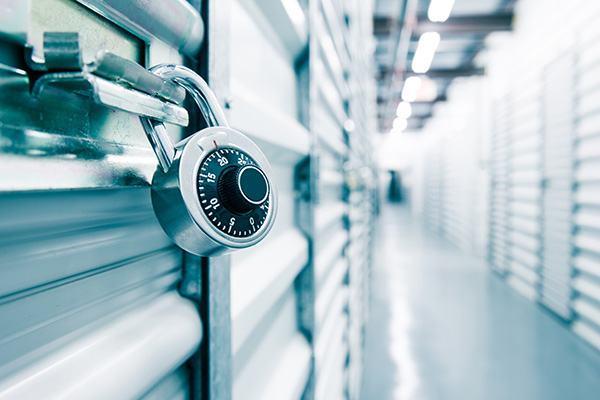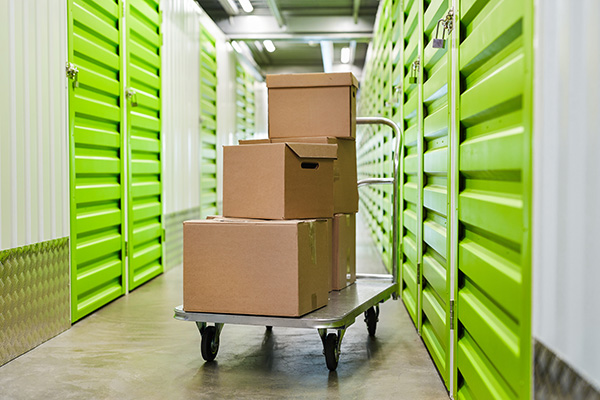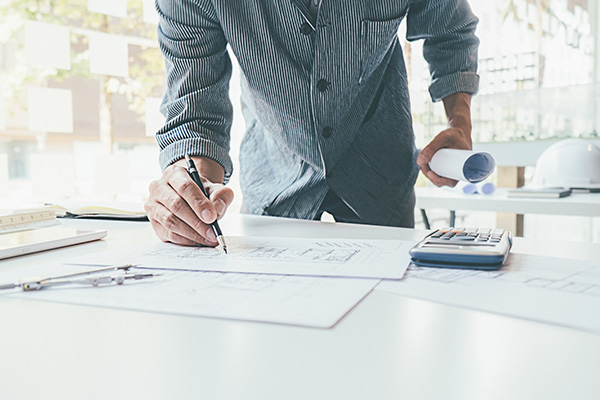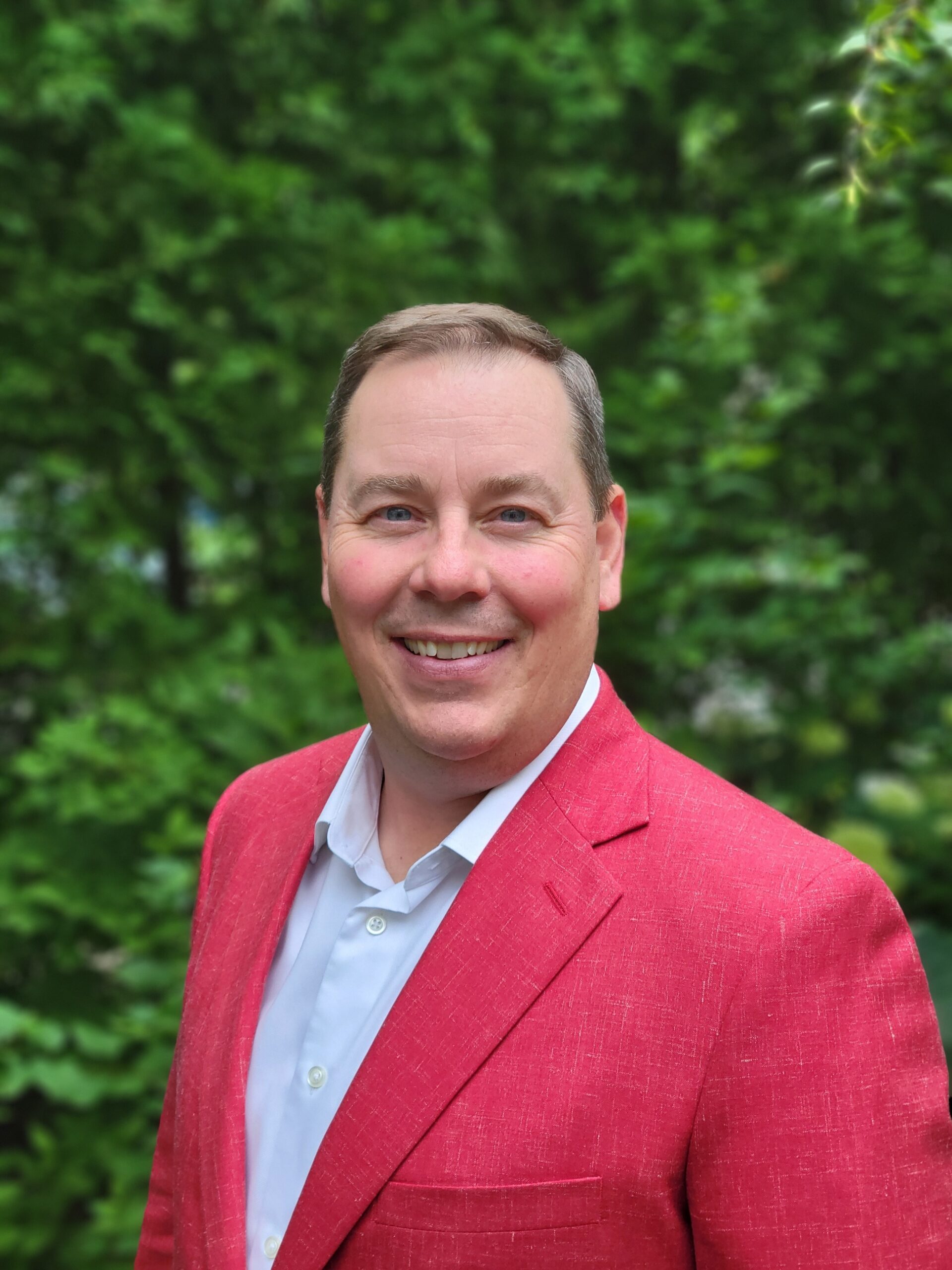Not all buildings have to look beautiful. What matters more is if they’re sustainable and cost-efficient. It’s all about looking for ways to enhance the performance and construction of a building without increasing its cost. Join Sam Wilson and his guest, Scott Krone, in this discussion about self-storage and Scott’s sustainable renewable construction initiatives. Scott is the Founder of Coda Management Group where he manages a wide range of real estate. Learn why he prefers self-storage over multifamily, the power of sustainable construction, and more. Also, discover how Scott has been so successful for such a long time. Find out his secret today!
—
Watch the episode here:
Listen to the podcast here:
The Pros Of Self-Storage And The Use Of Sustainable Construction With Scott Krone
Scott Krone is a Chicago native whose career in architecture began in 1991. In 2012, Scott founded Coda Management Group. Coda manages a wide range of real estate, including single and multifamily homes, retail, commercial, warehouse, self-storage and multi-use flex athletic spaces. He is also the author of High-Performance Homes: Navigating the Green Road to Your Dream Home, a book for homeowners seeking to incorporate green technology into their homes. Scott also founded a revolutionary storage business, the One Stop Self Storage. The One Stop brand is built upon the premise of providing the best in storage solutions containing sustainable renewable construction. Scott resides in Wilmette, Illinois, with his wife and three children. Scott, welcome to the show.
Thanks for having me. I appreciate the opportunity.
The pleasure is all mine. Reading through your bio, that’s a lot of moving pieces and activity. There are three questions I ask every guest who comes to the show. Can you briefly tell us where did you start, where are you now, and how did you get there?
It started way back. I graduated from college and I was getting my Master’s in Architecture. We had to do a summer class in order to qualify for the program. I had three weeks off between graduating from college and starting graduate school. We were all sitting around drawing from [9:00] in the morning until [5:00] at night and then talking about what we want to pursue. At that point, I realized that developers are the ones that control the architectural world. Control is a big thing within the design-build industry because if you’re always asking people to choose you, you don’t have that control.
I learned that early on that if you buy and own the property, then you control the rest of the process. I had a professor who was a developer and also an architect and a builder. I connected with him. I got to be his TA and then I began working on multifamily developments that he was building. He would take those projects and work on them in class. He selected mine to work on. That’s how I got started in the development of the real estate world.
That’s a smart professor to utilize his students in classes as free labor. It’s also fantastic for you guys coming in and going, “We get to work on not theoretical but live projects.”
He did get a lot of criticism for that because of the fact that he was using it to enhance his product or his company. The way I saw it is as much as he was using us, we were using him because we were getting real-world life experience. I went into it with that mentality that, “This is going to be something I want to do the rest of my life. I want to make sure that I’m learning from the best.”
When you want to do something for the rest of your life, make sure that you learn from the best.
One of the things we’re missing now in a lot of universities is that real-world application. That’s very cool that you got to do that. Let’s move forward. What happened between architecture and then 2012, when you said, “We’re going to start Coda Management Group?”
The biggest thing that happened was that we had our third major recession. The first was the fuel inflation in 1991 and then we had 2001 come along with that. We had the dot-com crash and the real estate market crash. We had those four major catastrophic events within the economy. The biggest ones being ’08 and ’09 when everything collapsed. At that point in time, I was predominantly in the residential world, either multifamily, single-family or mixed-use. That whole market dried up completely.
We had to pivot and shift. We were doing a lot of design-build for people as opposed to everything speculative. The banking world was pushing everybody into multifamily and I saw a huge cap compression. I saw a competition because that’s what everybody was going after. There wasn’t any other product that you got financing for.
I was doing real estate coaching and consulting. One of my clients wanted me to find them a distressed self-storage facility and I couldn’t do it. That’s what opened my eyes to the world that, “If we’re in the biggest recession that we’ve seen since the Great Recession, then why is this product doing so well?” That’s when I began investigating and discovering it. In 2013, we bought our first self-storage building. It wasn’t a self-storage building at that time. We converted it into a self-storage building.
We’ve heard from a lot of people that self-storage is recession-resistant. You walked and saw it. You went to buy distressed assets and you couldn’t find any.
I do term it recessionary resistant. I agree with you. I don’t think anything is proof. There’s always going to be something that does it. When we went back and studied every major recession since ‘91, we’ve tracked and monitored it. There has been a slight decrease in occupancy, followed by a large increase in growth. Even now, we see an all-time high in terms of occupancy across the country.
You were managing, though. You were doing a wide range of real estate, multifamily homes, retail, commercial and warehouse. Was this stuff that you were managing for other owners or buying and holding in-house?

We were holding it in-house. I’ve sold off on my multifamily. We do have one flex warehouse space remaining, but the rest of our product is all self-storage from an investment point of view.
Is this because of the trend you saw in ‘08 and taking risks off the table? What has been the thinking in getting rid of everything except for self-storage?
It’s all about risk. If I compare multifamily to self-storage, we were doing 400 units. It was $100 million in total gross sales. I can do 400 self-storage facilities for under $6 million. If you look at the comparison, there’s a whole lot less risk for that much equivalent type of unit product, but there’s a lot more flexibility. When we were doing the 400 units, we didn’t have a whole lot of flexibility in the product type because we had a condominium building that was approved. There’s only so much flexibility that we can change within those walls. With self-storage, I can take a 10×10, convert it with another 10×10, and make it a 10×20 or 5×5. There’s a lot of flexibility with what I can do there without having to go and get different municipal changes.
You’re decreasing your governmental risk in the sense that you’ve got codes and code enforcement without people coming in and telling you what to do in a condo building. Does anybody care if you take a 10×10 and do a 10×20?
No, because all we’re doing is removing an interior wall and sliding it over, but the lighting, fire suppression and all of that are exactly the same. From a life safety point of view, it’s exactly the same.
You’ve simplified your business model and taken risks off of the table. Talk to us about the return side of things. Has that profile changed any because you said there’s a correlation there?
It’s a lot more predictable because it’s a product that can be monitored and tracked. There are spending patterns within the population. We can model it out. We know what our list of philosophies should be. We also know how much risk we’re taking when we go into a product because of supply and demand, how much demand is in a community in a certain 3-mile radius and how much supply is out there. We can analyze the market up in terms of what we think we can do there.
There is no such thing as full-proof, only resistance.
That model is a lot more predictable. When we were doing it with apartments, it was like the Field of Dreams, “If you build it, they will come.” You couldn’t predict exactly how much someone was going to be wanting to pay or how fast they were going to buy your product. In self-storage, there’s a very predictable model.
Usually, there’s a stronger correlation like the less risk, the lower the return. You’re saying in this case, you’ve leverage taking risk off the table and yet at the same time has gained a lot of valuable benefits that you couldn’t find in other asset classes.
In addition to that, we’re adding cost segregation and doing opportunities zones. We’ve sold off our cell towers and all those sorts of things in order to enhance the rate of returns. While at the same time, as we talked about minimizing the risk, we’re not totally removing risks. There are always risks within the development. When we’re building, there is the buildup time that we do have to do with municipalities in terms of getting government approvals. What we’re trying to do is reduce all those as much as we can so that we don’t have to fight as many battles on too many fronts. We can focus on what we need to do.
Everything you guys are doing from this point forward is ground-up development.
No, we’re buying an existing and then we’re converting those as well. We’re looking to do value-add either in our management. Now that we have our own company, One Stop Self Storage, we opened up our own brand. We have facilities now in Wisconsin, Illinois, Ohio in Toledo and Dayton. We’re going to be building in Louisville, Kentucky, and then we also had one in Maine. We buy existing facilities as well and then look to see if we can either improve them from a management point of view or expand them.
When you say convert, what does that mean?
We’re buying an underperforming commercial building and turning it into self-storage. We’re gutting it, cleaning it all out, putting all the mechanicals and all the new roofs, and making sure the exterior fenestrations are all good. We’re putting in lockers in the interiors.

What type of buildings are you finding that are good candidates for that?
It’s empty warehouses or commercial office spaces in downtown areas. For instance, our Dayton project is 90,000 square feet. It had been empty for 40 years. They couldn’t convert it into multifamily because it didn’t have underground parking. The structural base did not work for parking. There was no space for on-site parking. When we went in there, self-storage was the only use that could be done without having to go through a zoning variation. We turned the whole 90,000 square feet into self-storage. The city did make us dedicate a corner of the building for retail like a coffee shop. We do have provisions that if it doesn’t lease out in a year, then we can convert it back into self-storage.
What was that type of building before?
It was a five-story concrete structure with a brick façade. It was originally a warehouse that had been empty. There was no power, gas and water to it. We had to restore it but all around it is exploding with loft condominiums and new apartments, condominiums and townhomes all in the downtown Dayton area.
I would imagine that’s perfect for storage to be that readily available right within the vicinity of all those things occurring.
We would like to encourage those neighbors to build out their livable space as much as possible and minimize their closets.
Talk to us a little bit about your sustainable renewable construction initiatives in the self-storage space. What does that mean?
We began that when I started the company back in 1998, looking at ways in which we could make any building more sustainable, solar orientation to construction techniques, to all those sorts of things. At that point in time, true green programs were more costly than the payback return. We’re always looking for ways in which we can enhance the performance of a building without necessarily adding dramatically to the increase of the construction cost. Otherwise, the rate of return doesn’t do that.
In each of these buildings, we’re taking off the roof and putting in the current insulation code. We’re going from maybe zero insulation on the roofing to close to R-50. We’re also doing reflective. For instance, in warmer climates, we’re going with a reflective metal without color so that you don’t get the heat gain in the building and cut down on the heating load. We’re looking at better and higher efficiency furnaces and cooling units, but then also lights that are not only motion but timer sensitive. They’re all turning off. As you walk through the building, they all go on. Everything along those lines.
Your building doesn’t have to be the most beautiful. It just needs to be efficient and sustainable.
We’re closing up the window fenestration. A lot of buildings lose heat either vertically or horizontally through the windows. The more that we can enclose the building with foam insulation and make the envelope tighter, then we’ll have more sustainable product. People might say, “It’s a storage building.” We’re not trying to make it look like a Ritz-Carlton and the most beautiful building. We’re trying to make it the most efficient and best product for our clients.
I would think that a lot of those insulation and tightening up the building itself would apply more to spaces that require heated and cooled spaces in self-storage. A lot of storage doesn’t have any of that. It’s whatever the temperature is. How does that work?
All of our conversions are climate-controlled. For instance, in our Louisville project, that is our biggest load. There is cooling, not heating. In the existing building that we bought, the tenants could not use the upper floors during the summer because the heat gain was so hard. By changing the insulation, putting on new roofing and cooling, and then closing up the windows, a lot of the windows were already closed up, but they don’t have any insulation on the backside of them. It still adds to the heat gain. The more heat we can keep out, the better condition the building will be, and then our operating costs will be lower.
How do you take those green and sustainable initiatives and recoup that cost compared to the guy down the street that doesn’t give a rip?
The first part is where we buy the product. We’re buying these buildings between $11, $12 or $13 a square foot. It’s well below my replacement costs. The only money that I do put into it is still below what another new construction facility will cost. We have a competitive advantage there. The money that we can spend on the energy efficiencies is because we’re getting it on the acquisitions.
Rewinding the tape a little bit and saying, what are some things that you feel like you have done right over the years that have allowed you guys to get where you are now?
I’m not going to say I’m perfect on this and I’ll explain why I’m not perfect on it. I sold my last apartment building years ago. I thought we were at the peak of the market. There’s still cap compression going on there, but I have the ability to pay attention, monitor, and see what’s going on with the general economy, and knowing how we need to pivot to adjust risk in order not to get caught. Those are the things that we’ve been doing. I’ve done it a couple of times now throughout my career.

In ‘08, ‘09, we stopped buying speculative properties because I saw the market coming as a crash. I got criticized by my competition for selling too low. I was like, “I’d rather be done. I’m happy with the profit that I took. I’m cutting and moving on.” We’ve been able to pivot quite a few times in order to stay and survive. There have been a lot of people that weren’t able to do that. We started in 1998 and here we are still continuing.
What advice do you have to someone who may be looking to scale their portfolio now? How do you feel that that would correlate to what you saw in ‘07, ‘08 or ‘09?
Just because you’ve done it once or twice, maybe even 5 or 10 times, doesn’t mean that you know it all. There’s a difference between being lucky and being successful. Successful is longevity. That’s one of the things that my mentor talked about. He came to the United States when he was sixteen with a couple of hundred dollars in his wallet. Now, he owns major Fortune 500 companies. He is the president of a university. He always says, “Anybody can be lucky once but to be successful, you have to look at it a long play.”
Don’t get too high on your highs and don’t get too low on your lows. Make sure that you focus on what you’re doing and always looking into ways to improve. In fact, they opened up at his university a $170 million complex. They had John Maxwell speak there. He talked about his cycle of success. It was, “Test, test, test.” Become good at failing the test, understanding how to improve, and getting closer to perfection during those failed tests. Reuse it, grow from there, and then repeat the cycle. That’s something that we always want to do. It’s making sure that we’re always growing and developing. Just because you’ve done it a couple of times, don’t think that it will continue forever because no market lasts forever.
Treading carefully in this economy and where we are, what about people moving forward now? Would you say cautiously? What do you think?
I always think cautiously. You make your money on the buy. A lot of it has to depend on your market. There are hot markets right now. There’s no doubt about it. Especially in Texas, Carolina, Tennessee and Arizona. Those markets are continuing to explode, but there are other markets like here in Chicago which are not. You need to know what’s going on. What are the drivers in that market that are causing that? Paying attention to those market drivers to see if they’re going to be changing, if they begin to change, then you need to begin pivoting your model.
I don’t know what those early tell signs are when you see a market begin to change. Do you have any thoughts on that?
One, I listen to what’s going on in the Federal government. The first was the internet bust and then the real estate bust. The fed was predicting it. What is the fed saying about the general economy and the market, and then relaying it to what is going on locally. I also look at the local political situation in terms of taxes, structures, and those sorts of things. Are municipalities being receptive to building or are they being negatively pressured on things?
Anybody can be lucky once, but to be successful, you have to look at it as a long play.
We go into a community and they’re like, “We can have self-storage anywhere but here. We don’t want it here.” That’s a tell-tale sign that something is driving that. Usually, the worse the economy, the more receptive municipalities are because they’re trying to spur their local economy. If the economy is booming, they could give a flip. They think they have all the power in the world and they don’t need you. At that point in time, they don’t.
You have to be seeing what’s going on at those levels in terms of getting your zoning, entitlements, and also what’s going on in the financing world. Are things tidying up? Are you seeing interest rates rising in terms of lenders? Are you seeing you have to put more money down? What is driving that? Usually, that is banks minimizing their risk. They’re looking at their risk portfolio. I’m reading the papers and paying attention to what’s going on in the news. I’m looking nationally and locally.
I’m also getting feedback constantly from lenders and brokers to say, “What are the trends that we’re seeing here?” I spend at least 20% of my day listening to what other people say and absorbing. That’s one of the things my mentor talked about. There’s a difference between listening and hearing. We use our ears to hear, but we need to use our minds to listen and paying attention to what’s going on in the world.
Someone in your position you would think has done and accomplished so much that at this point, mentors or mentorship would not be necessary or valuable. Why do you still have a mentor in your life? What do they do?
There are plenty of areas that I need to work on in my life. I’m not being facetious when I say that. A mentor, life coach, spiritual director or whatever you want to call them, they shine light in areas that you’ve gotten used to covering up and exposing. In those areas, we can all work to be better and grow. Ultimately, that’s what I think it is. I think God put us here to learn more about ourselves and Him, and grow. If not, we’re in a relationship with other people. How we interact with other people is what it’s about.
Scott, I’ve enjoyed this. There has been so much we’ve covered.
It’s my pleasure. I’m glad we could do this.
Anything else to add before we jump into the final four questions?
I want to thank you for having us. If someone is interested more in learning about self-storage, as a gift to your readers, if they mentioned the show, we will send them a free feasibility study report that we buy for our properties. I will give them one that we’ve done so they can see why we went into that market and made those decisions. We would email that to them for free if they mentioned the show.

If you are reading, that’s a valuable gift. Thank you, Scott. Once you read through a good feasibility report, they’ll shine a lot of light on how it engineers and helps Scott and his team think. The final four questions are this. First one, if I gave you $20,000 to invest in real estate and you had no previous real estate investing experience, what would you do with it and why?
I would try to take much advantage of the local tax structures. For me, when I had $20,000, I began buying smaller residential things, fixing them up, and seeing an appreciation. After living in it for two years, flipping it tax-free and then continuing to do that. My wife and I did that six times. We went from a $92,000 condominium up into our current home, which we put a little bit more than $92,000 into it.
That’s serious dedication to a process. I’ve known people who have done it a few times but six, which means for twelve years, you’re implementing the same exact process.
It was the same concept, not the same process because we went from one condo to another condo. We bought a house where we put a second story on it. We bought a property where we tore down and built a new one. The next one, we tore down a house and built a new one. The final one, we tore down another house and built a new one.
Question number two, if you could help our readers avoid one mistake in real estate, what would it be? How would you avoid it?
Making sure you do your due diligence and not overpaying for a property. During the last crash in ‘08, ‘09, I saw people buying for over-asking price and then they got stuck, holding properties that they couldn’t move. It wipes you out. You have to be able to move a property. Your cost basis is the critical thing to that.
Question number three, when it comes to investing in the world, what’s one thing you’re doing to make the world a better place?
I’m investing in myself. Hopefully, I can make my little world a better place. I began a two-year program called Transformation. Every quarter, we meet. It’s like a retreat. A lot of it involves solitude and silence. That is something that I’m doing to improve my leadership skills, my company, and also those that are around me.
If our readers want to get in touch with you or your team, what is the best way to do that?
Our webpage is www.CodaMG.com. You can email us at Info@CodaMG.com. You can also check out our website, OneStopSelfStorage.com.
Scott, thank you so much for your time. It has been fantastic.
Thank you very much.
Important Links:
About Scott Krone
 Scott is a Chicago native whose career in architecture began in 1991 by pursuing his Masters of Architecture from the Illinois Institute of Technology. While obtaining his degree, he also worked as a Project Manager for Optima, Inc. During his time at Optima, Krone’s responsibilities included notable projects such as the 400 unit Cormandel in Deerfield, IL, the 40 unit Hedge Row in Winnetka, IL, and the 51 unit Optima Center Wilmette in Wilmette, IL.
Scott is a Chicago native whose career in architecture began in 1991 by pursuing his Masters of Architecture from the Illinois Institute of Technology. While obtaining his degree, he also worked as a Project Manager for Optima, Inc. During his time at Optima, Krone’s responsibilities included notable projects such as the 400 unit Cormandel in Deerfield, IL, the 40 unit Hedge Row in Winnetka, IL, and the 51 unit Optima Center Wilmette in Wilmette, IL.
In 2012 Krone founded Coda Management Group a firm who specializes in managing real estate assets. Since its inception, Coda manages a wide range of real estate including single and multi family homes, retail, commercial warehouse and self storage and multi use flex athletic spaces. Currently, the platform of investments is in excess of 55 million. Krone has authored High Performance Homes Navigating the Green Road to Your Dream Home, a book for homeowner’s seeking to incorporate green technology into their home.
Most recently, Scott also founded a revolutionary storage business The One Stop Self Storage. It’s committed to make its members’ time of transition rewarding and strives to remove challenges and hurdles commonly found in the industry. The One Stop brand is built upon the premise of providing the best in storage solutions contained in sustainable, renewable construction and it’s located in WI, OH, KY and ME ( Toledo, Dayton, Ellsworth, and soon to Louisville and Chicago). Krone resides in Wilmette, IL, with his wife and three children.

